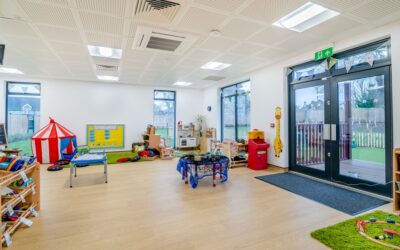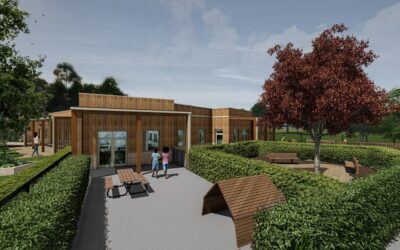TG Escapes Blog
5 ways LED lighting improves safety in modular buildings
Cheaper, longer-lasting and better for the environment — LED lights have plenty of benefits. Here, David Boultbee from Ultra LEDs explains how they can even be a safer option than traditional bulbs for lighting modular buildings.
From manufacturers to consumers, the UK is changing its habits and looking for ways to be more environmentally friendly in almost every industry (Global Web Index).
Modular buildings are made up of prefabricated sections that are constructed away from the site and then delivered. This method reduces the impact on the local environment that building work can have and is also a lot quicker and less wasteful than other construction methods. Because of this, many of us are choosing modular buildings for schools, offices, and accommodation in an effort to be more sustainable.
But sustainability is just as much about choosing the right internal fixtures and fittings as it is about construction. When it comes to the best lighting systems for these kinds of buildings, LEDs can be considered one of the safest options — and they have a whole host of extra benefits too. Below, I'll be taking you through just some of the ways LED lighting can improve safety in modular buildings.
Reduced power consumption
LEDs are a lot brighter than traditional bulbs. Despite this, they use and waste less energy because more of the power they consume ends up as visible light rather than heat, which means they require less energy to run. This saves you money, reduces the demand for electricity that fuels the need for more and more power stations, and it means you can opt for sustainable energy sources that are less harmful instead.
Lower risk of fire
LEDs are a better option when it comes to fire safety as they don't get as hot to the touch as traditional bulbs, which convert 95% of their energy into heat. As LED's only convert 60% into heat, they are less likely to combust and cause fires which, in lightweight modular buildings, can spread quickly.
Long service life
LEDs can last around 50 times longer than incandescent bulbs. This means you don't have to replace them as often, which is better for reducing the carbon emissions associated with the manufacturing process. They can also be made from plastic rather than glass, so they are less likely to break and cause injuries to the occupants of a modular building.
Safer and less impactful materials
When the time does come to replace your spent LED bulbs, they can have less of an impact on the local environment when they are disposed of as they don't contain the same harmful chemicals, such as mercury, that can be found in fluorescent bulbs. So, when they break down, they won't leak these pollutants back into the ecosystem.
Mood-boosting benefits
LEDs are often considered less damaging to the welfare of the occupants of a modular building as they mimic daylight without generating harmful UV rays. Whether the building is being used as accommodation, a school, or office, installing LED lights can help us be more alert when we need to be without UV radiation.
These are just some of the ways that LED lights can be considered safer to use in modular homes than other sources of light. They're less likely to cause a fire or impact the environment, and they can even be better for our health and wellbeing too.
About the author
More posts from our blog
Meeting Rising Nursery Demand Through Modular Buildings
As the demand for early years education rises, nurseries across the UK are under increasing pressure to provide sufficient spaces. Driven by a number of factors, from population growth and new neighbourhoods to expanding government-funded childcare, nurseries need...
New Psychology Building at Solihull 6th Form College opened by His Majesty’s Lord-Lieutenant of West Midlands Derrick Anderson CBE
Solihull Sixth Form College's ambitious expansion took a giant leap forward on January 6th with the unveiling of the Turvey Building. This impressive addition, constructed in a mere seven months, will immediately accommodate 400 new learners, a testament to the...
Integrating SEND and Mainstream Students With Thoughtful Building Design
While some children with complex needs benefit most from education within a specialist school, many SEND students can and do thrive in mainstream settings, allowing them to develop alongside their peers. As the number of SEND students grows, there is increasing...



